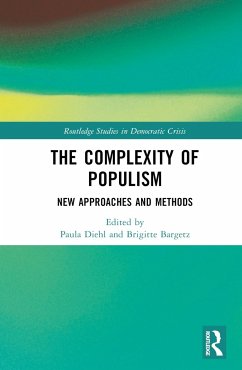
Mapping Populism
Approaches and Methods
Herausgeber: Ron, Amit; Nadesan, Majia
Versandkostenfrei!
Versandfertig in 2-4 Wochen
176,99 €
inkl. MwSt.
Weitere Ausgaben:

PAYBACK Punkte
88 °P sammeln!
This collection, which can serve as an introduction to the field of populism, provides an array of interdisciplinary approaches to populist mobilizations, theories, meanings, and effects.













